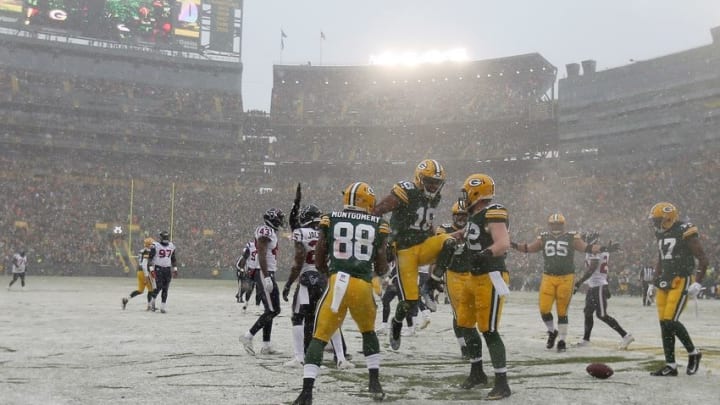
A more balanced attack
Something which has come up as an issue throughout Mike McCarthy’s tenure as Green Bay’s head coach is how this team will suffer through huge swathes of games and seasons with a wholly imbalanced attack.
There are plenty of answers as to why that happens (injuries, an overall lack of running talent, poor production, unhelpful game situations, having an MVP-level quarterback), but this year has been especially unbalanced.
As of this week, Green Bay has called passes on over 65% of their plays in 2016– 2nd-highest in the NFL behind the winless (and always-trailing) Cleveland Browns. That number has been even higher since Green Bay’s 3-1 start fell apart, leaping over 70% at times. That can at least in part be contributed to the litany of injuries destroying the depth and dependability of their running options — as well as how they fell into massive early deficits in their 1-5 slump — but it shouldn’t excuse it.
With little success in that aspect of the game — and a variety of pass-catching options for their former MVP quarterback — an argument can be made (one I myself had prescribed to) that it really did end up being their best hope for offensive success, but it was obviously an unsustainable option and could have major ramifications should they hit stretches where it did not work.
Here, they got back to that search for balance, and it worked well for them.
For the first time since that 3-1 start (where they did this every time), Green Bay managed to accumulate more rushing attempts (26) than they did completions (20). The balance they found was able to open up the game for both aspects of the offense, with the rushing attack combining for 109 yards and the passing game going for 209.
Another part of what that balance helped allow for was big plays from each area. Green Bay had five runs which went for 10+ yards, and also four passing plays which picked up 15+ yards. Only one of these were scoring plays on their own, but the vast majority came as part of scoring drives (four of the runs and four of the passes were on the final two touchdown drives).
If Green Bay is going to bring Aaron Rodgers’ words into actuality and really run the table to end the year, keeping this sort of balance — and benefitting from the positive side-effects of it — will be paramount.
